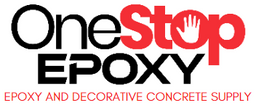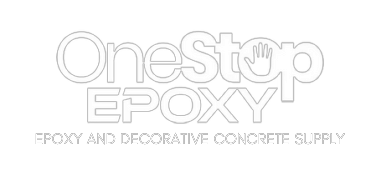Epoxy floor installations can be a stunning addition to any residential or commercial space, but achieving a flawless finish can be challenging especially when bubbles appear. If you're a professional epoxy installer looking for detailed guidance on preventing bubbles in your epoxy floors, you're in the right place. This common sense guide will walk you through the process step by step.
1. Proper Surface Preparation
- Start by properly grinding the concrete substrate.
- Repair any chips, divots, cracks, holes, or other imperfections in the surface.
- Meticulously clean and prepare the concrete to receive the resinous flooring material by removing all dust, dirt, and debris.
The number one cause of air bubbles is air pockets in the substrate. It amazes me when I talk to people that are all too often under the impression epoxy is the miracle material that just covers up every imperfection in the floor. I agree with that but only if you properly prepare the substrate.
2. Seal The Pores Of The Concrete With A Primer
You’ve fixed all the big air pockets in the floor now you need to seal the small ones. Micro holes will give you microbubbles. If you don’t seal them you’ll pay dearly for skipping this step. How do you fill microbubbles? With a concrete primer. This can be a specially made primer made to seal the microbubbles or a water base epoxy which can really soak deep down into the concrete to seal the pores and give you an excellent prime coat to bond to.
3. Temperature and Humidity Control
Maintain a stable temperature and humidity level in the workspace whenever possible. Avoid extreme fluctuations. Ideal conditions are typically around 70°F - 75°F (21°C - 24°C) with 50% relative humidity.
4. Epoxy Resin Mixing
Follow the manufacturer's instructions for mixing epoxy resin components. When it comes to mixing more is not better. Most epoxy resins say mix 2 – 3 minutes. I can’t tell you how many times I hear people say “{I’ll mix it really good. I’ll mix it like 10 minutes” or “I mix it 4 or 5 minutes” like that’s something to be proud of. IT’S NOT PAINT! If the manufacturer told you 3 minutes then set a timer and stop at 3 minutes. If it’s a really hot day then stop a little sooner. Maybe at the 2:30 or even 2:15 mark. If you want to mix it properly and quickly, you should only use a Cage Mixer and 2 minutes should be plenty.
5. Deaeration Techniques
Let the bubbles come out of your “A” or (Base) component before mixing in the “B” (Hardener or Activator) particularly in the case of Metallic Epoxy applications. If you have bubbles after mixing the pigment into the “A” or (Base) then allow time for the mixed epoxy to rest for a few minutes to allow air bubbles to rise prior to adding the “B” (Hardener or Activator). In the case of Metallic pigments you may want to wait for an hour or hours to let your pigments melt and let the bubbles come out.
6. Squeegee Application
Use the proper squeegee to spread your epoxy.
7. Roller Application
Use a high-quality epoxy roller for a uniform application. DO NOT use rollers from big box stores, they shed. Use a high quality epoxy roller and roll it and be done with it. If your rolling and hearing sticky sounds then you’ve rolled to long. At that point you’re going to get roller shedding and roller pick up and introduce air into the materials. Remember, air makes bubbles!
Roll in a pattern that ensures even coverage and helps release trapped air.
8. Self-Leveling Epoxy
When working with self-leveling epoxy, pour it evenly and work it as minimally as necessary to let it self-level.
9. Minimize Air Movement
Turn off ALL ceiling fans and when possible turn off the HVAC system. All that air movement with negatively affect your freshly poured epoxy floor. Restrict access to the area during curing to prevent dust and debris from settling on the epoxy.
10. Have Adequate Ventilation Minimal Air Movement
Ensure proper ventilation during installation and curing to disperse fumes and support the curing process but don’t point fans or HVAC vents on your freshly poured floor.
11. Final Inspection and Touch-Ups:
After you’ve poured and rolled your floor, about 20 minutes after you’ve finished inspect it for any bubbling. If you have any bubbles, now is the time to torch those bubbles if you need to. Solvents like Denatured Alcohol, Acetone, or Xylene (see manufacturer Data sheets for thinning and or cleanup and you’ll know which product to use) can be misted onto the bubbles to pop them. Have caution though. Doing so may cause discoloration when your floor is dry.
After the floor has cured and before you apply your seal coat, inspect the floor for any remaining imperfections. If necessary, lightly sand out any remaining bubbles or if necessary you may need to do some patch work if you had any big bubbles. For a flawless finish, do this before you apply a topcoat.
By following these detailed steps and best practices, you'll significantly reduce the likelihood of bubbles forming in your epoxy floors.


